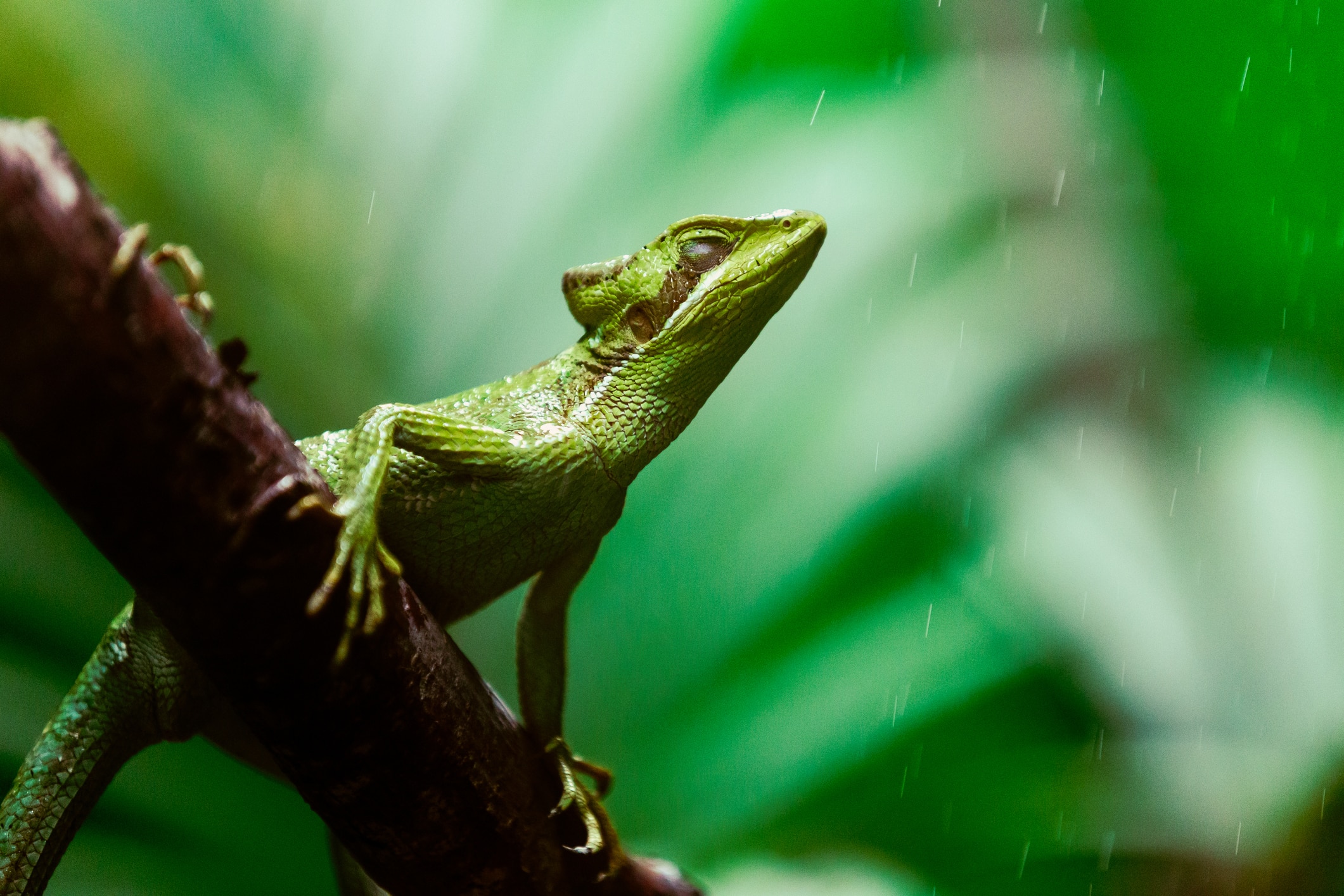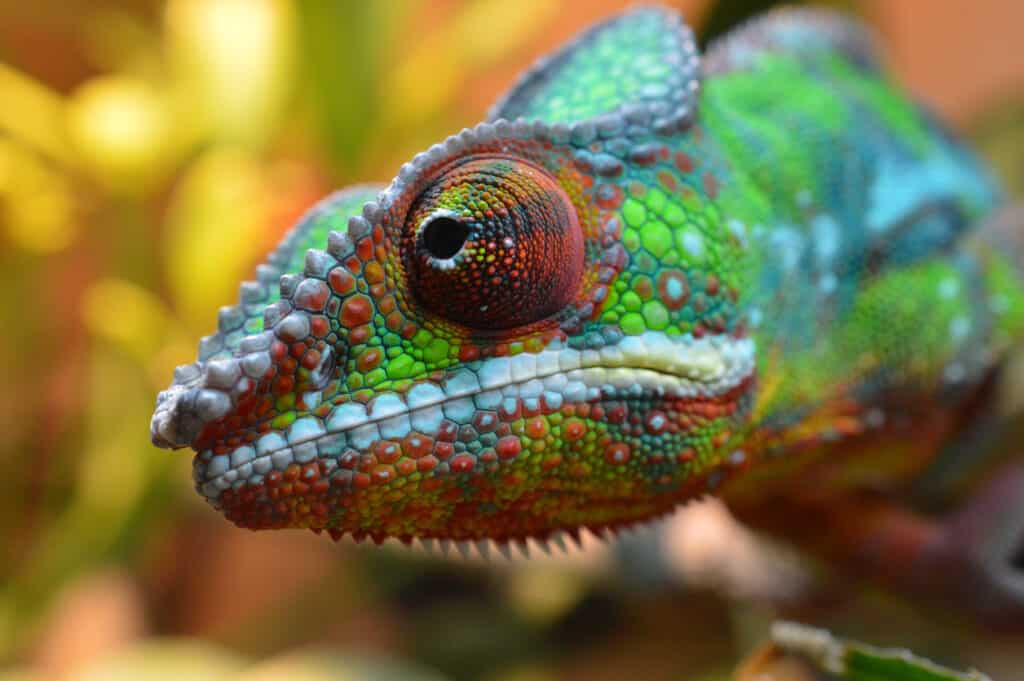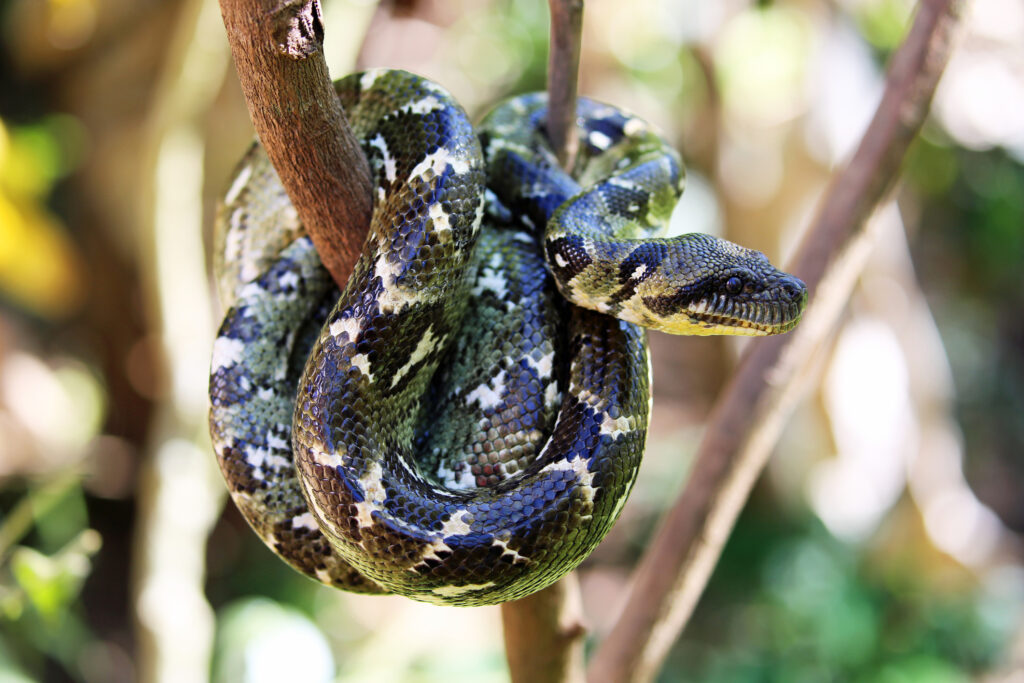The Layers of the Rainforest and What They Mean
Rainforests are found all over the world, from the Amazon and Congo to Borneo and the Guinean Forests of West Africa. Stretching across a decent chunk of the planet’s surface, their immense size means they contain multiple layers, each of which house different species of plants and animals. Despite being part of the same rainforest, each layer is almost capable of creating its own microclimate.
Here, we’ll be exploring everything we know about rainforests, starting with why they’ve been given their name.
Why are they called rainforests?
The explanation behind the name is plain and simple. Rainforests are forested areas that receive significant amounts of rainfall.
Rainforests can be found on every continent except Antarctica, and they are some of the world’s oldest living ecosystems. The biggest, and probably most famous, rainforest is located in the Amazon, which spans over 8 different countries. It’s roughly 28 times the size of the UK! The Congo is the world’s second largest tropical forest, and is around the same size as Mexico.
What will you find in a rainforest?
Rainforests are filled with diverse species of animals and plants, some of which can’t be found anywhere else on the planet. Rainforests might only cover 2-6% of the Earth’s surface, but they’re home to around 90% of the world’s species. A major role of the rainforest is to regulate the world’s climate and look after the overall well-being of the planet, thanks to their size and the huge variety of plants, trees and other organisms which can absorb carbon dioxide and stop the planet from becoming too warm.
You can find all sorts of creatures, including snakes slithering around on the ground and coiling around trees, frogs hopping across lakes and rivers, and chimpanzees swinging from the treetops. Not to mention the species we’re yet to discover in these vast spaces!
Wherever they are on the planet, you can expect wet, warm and humid weather conditions. This is because the abundance of plants and trees accelerates a process called transpiration, which triggers a cycle of water vapour being released into the clouds by the plants and then producing rainfall.
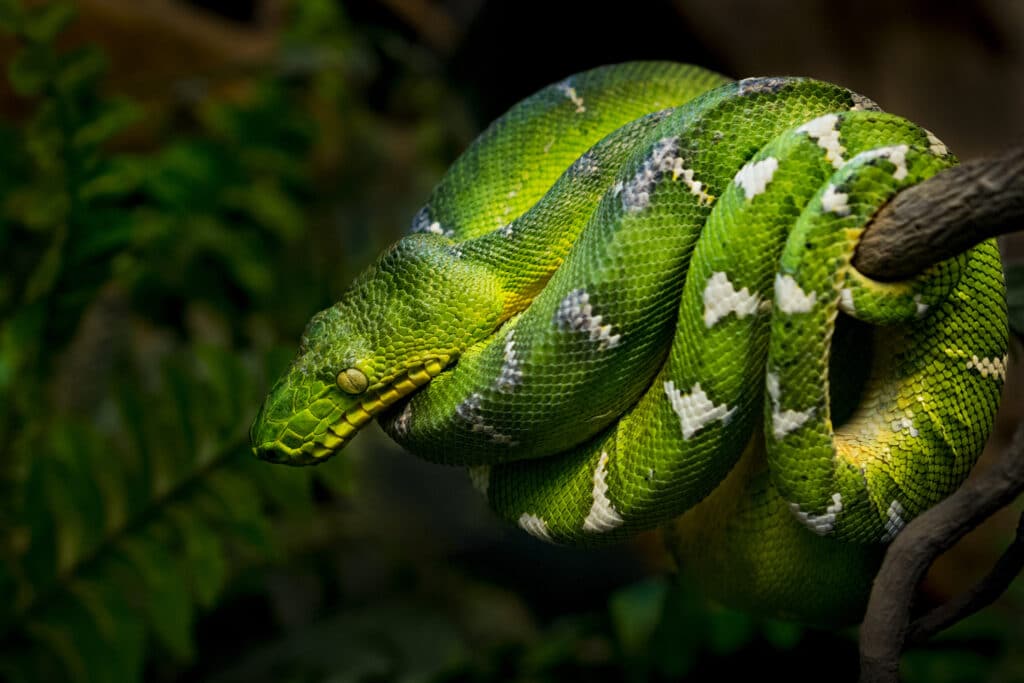
How is the rainforest structured?
There are four main layers contained within rainforests, with the emergent layer at the top, the canopy and understory layers in the middle and the forest floor layer at the bottom. Let’s work our way down the rainforest and learn about each layer in a little more detail.
Emergent layer
Sitting at the very top of the rainforest’s skyline is the emergent layer. This area sees the most sunlight since the foliage is sparse, and the trees you see here are some of the oldest among those in the rainforest. Some reach incredible heights of around 200 feet above the forest floor.
Animals mostly get around by flying or gliding around the treetops, while some are light enough to stay supported by the branches. Examples of species you can find way up here include pygmy gliders, Madagascan flying foxes & hummingbirds.
Canopy layer
This deeper layer acts as a canopy roof over the understory and forest floor of the rainforest, offering protection and shelter for the plants and animals living in these three layers. It also blocks out the elements, which creates the dark, humid and still environment below. Leaves on the trees have adapted to repel water with a glossy finish and pointed tips.
More species live in this layer due to the increased availability of food compared to other layers. The majority of species here can either fly or easily manoeuvre across tree branches without disturbing the more delicate branches. Howler monkeys, scarlet macaws and two-toed sloths are among some of the species that call this layer their home.
Understory layer
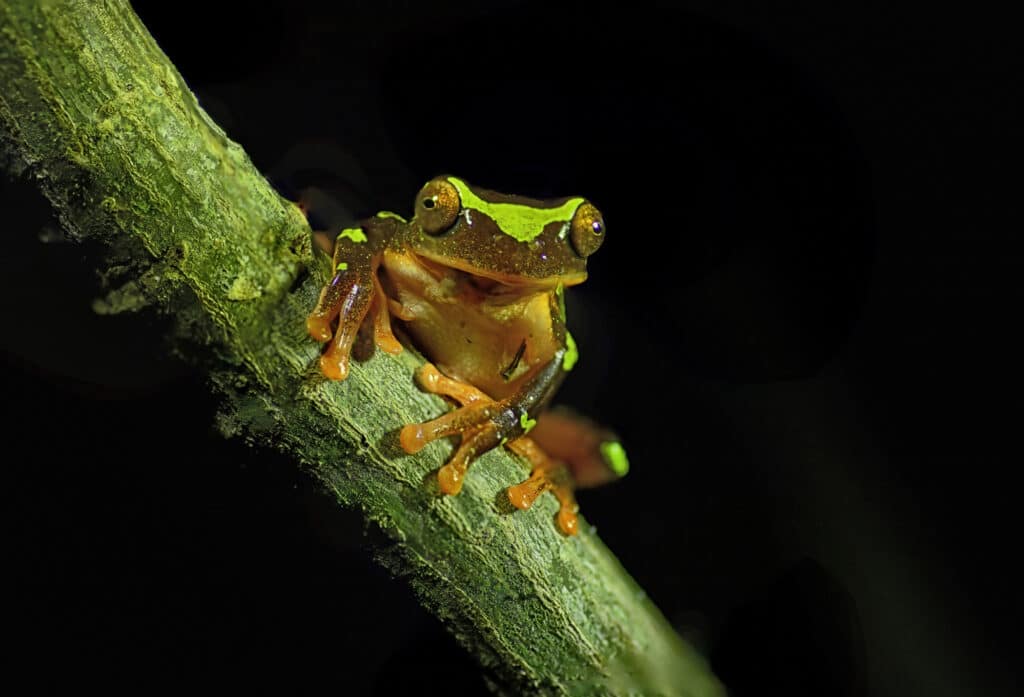
Dark, humid and still – the understory layer of the rainforest compensates for the darkness with bright and strong-scented flowers, which attract pollinators. The understory is also filled with new plants, shrubs and trees, although these don’t tend to grow very tall.
Species living here tend to thrive in humidity and prefer the open space offered. These animals, including the southern flying lizard, green mamba, tree frogs and eastern gorillas, normally use the large leaves of the plants and trees to keep themselves camouflaged and protect them from potential predators. This can also help them sneak up on unsuspecting prey.
Forest floor layer
Sitting at the very bottom of the rainforest, this layer is the darkest of them all. The lack of sunlight makes it difficult for anything to grow here, and the floor is mostly covered by organic matter, which falls from the taller trees, shrubs and other plants. The decomposing organic matter provides essential nutrients to a group of animals referred to as ‘decomposers’, which includes termites, slugs and worms.
The bottom of the rainforest is also prone to flooding from torrential rainfall, which creates networks of rivers and lakes running through the rainforests.
The forest floor might be dark and damp, but that doesn’t make it uninhabitable. While it’s true that the species here are largely outnumbered by the animals that live in the upper layers of the forest, some can thrive in these conditions. Larger animals, such as leopards and tigers, can often be found here alongside smaller creatures like snakes, rats and insects. The waterways also feature species such as the red-bellied piranha, electric eels and bull sharks.
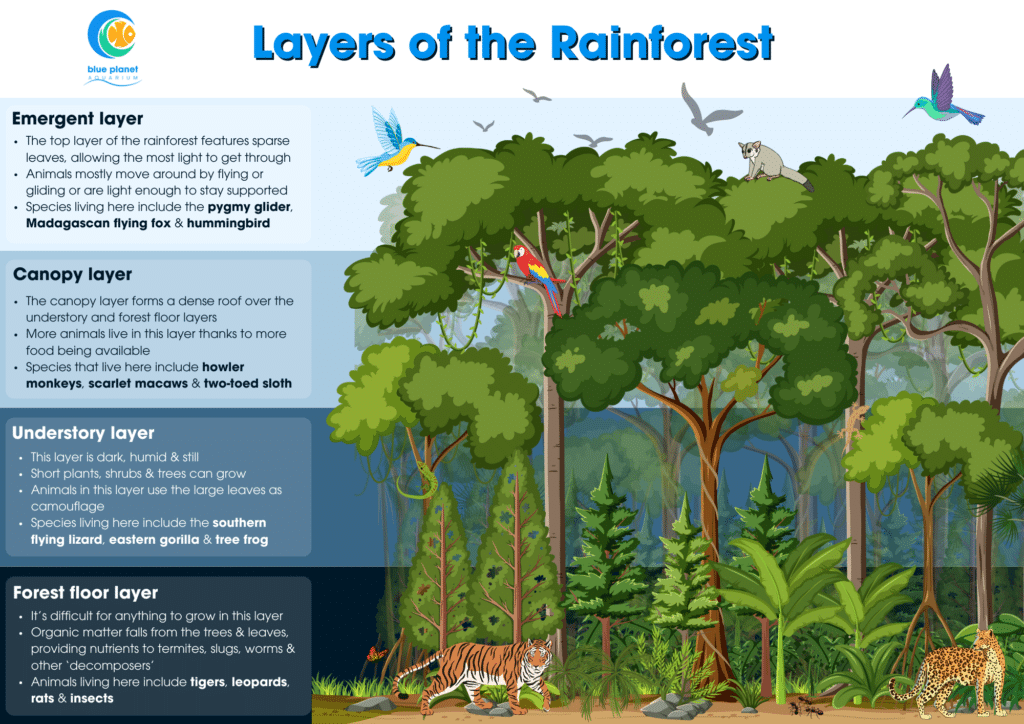
Learn more at Blue Planet Aquarium
At Blue Planet Aquarium, there’s no need to venture into the rainforests to discover the diverse range of species inhabiting these locations. Our Flooded Forest exhibit and Frog Zone are home to exciting rainforest natives, including stingrays, black pacu and poison dart frogs. Book your tickets today to come along and learn more!
